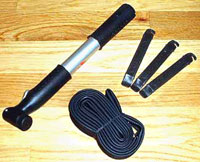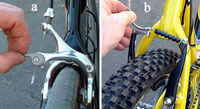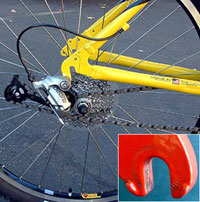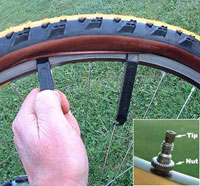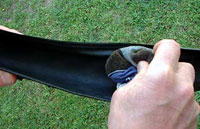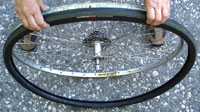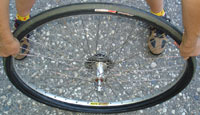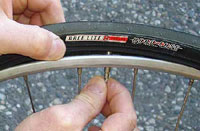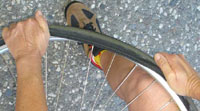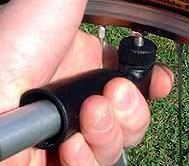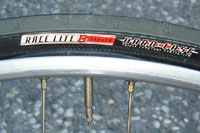How To Fix A Flat Tire
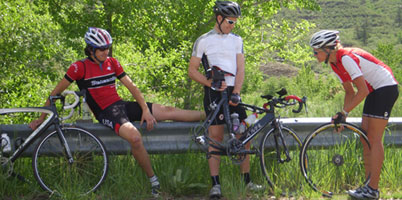 Join Global Bikes for a Free Repair Clinic!
Sooner or later, you'll ride over some glass or perhaps hit a rut or hole and get a flat tire. When this happens, don't panic! As long as you carry a few basic tools (which we can help you with), flat repair is easy—even fun! Here's how it's done. Note that these instructions are for standard tires and tubes, and tubeless setups, and for road and mountain bicycles, too. Tips
Tips
Tips
Tips
Tips
If the tube gets trapped beneath a bead (photo, below, left: click to enlarge), inflating further may blow the tire and tube off the rim! There are bead lines on the sides of the tire that should be equidistant from the rim all Tips
From the best pumps, to spare tubes, patch kits and flat-resistant tires and tubes, we have everything you need to ensure that you have a minimum of flat tires and an easy time fixing flats, too. We can also show you how to fix a flat. Just ask if you need any help at all. Thanks! |

